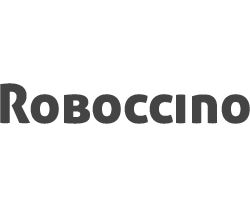How to Effectively Utilize Cosmetic Powder Machines for Your Business Success
In the competitive landscape of the cosmetics industry, the effective utilization of advanced machinery is vital for business success. One such innovation is the Cosmetic Powder Machine, which plays a pivotal role in producing high-quality cosmetic products efficiently. According to a recent report by Allied Market Research, the global cosmetic manufacturing market is projected to reach $758 billion by 2025, demonstrating a growing demand for innovative production technologies. This rising demand emphasizes the importance of investing in state-of-the-art equipment, such as Cosmetic Powder Machines, that can enhance product consistency and reduce production time. By understanding the optimal use of these machines, businesses can not only improve their manufacturing capabilities but also increase their market competitiveness.
Understanding the Different Types of Cosmetic Powder Machines and Their Functions
Cosmetic powder machines are essential tools in the beauty industry, offering a variety of functionalities that cater to different aspects of cosmetic production. One of the most common types is the mixing machine, designed to blend powdered ingredients uniformly. This equipment ensures a consistent texture and quality in products such as face powders and foundations, which is crucial for maintaining brand reputation. Additionally, the mixing machines often come with features that allow for the incorporation of other elements, such as fragrances or active skincare ingredients, enhancing the overall value of the offerings.
Another significant type is the filling machine, specifically engineered for efficiently packaging cosmetic powders into containers. These machines can handle various sizes and types of containers, ensuring that products are filled accurately and quickly, which is vital for meeting market demands. Furthermore, there are also coating machines that apply a protective layer or treatment to powders, which can enhance the longevity and performance of the product. Understanding these different machines and their functionalities empowers businesses to select the right equipment, streamline their production processes, and ultimately contribute to their success in the competitive cosmetic market.
Key Performance Indicators for Assessing the Efficiency of Powder Production
When assessing the efficiency of powder production with cosmetic powder machines, it’s essential to focus on key performance indicators (KPIs) that track operational effectiveness and product quality. Industry reports suggest that optimizing production speed can increase profitability significantly; for instance, companies that have implemented advanced technology in their powder production lines have reported efficiency improvements of up to 30%. Monitoring the cycle time—from mixing to packaging—is crucial, as it directly impacts the overall output and customer satisfaction through timely delivery.
Another vital KPI is the first-pass yield, which measures the percentage of products manufactured correctly without the need for rework. According to a recent study by the Cosmetic Industry Research Group, achieving a first-pass yield of over 95% is considered an industry standard for successful businesses. This figure indicates that manufacturers can minimize waste and reduce costs while maintaining high-quality standards. Regularly analyzing these KPIs allows businesses to identify bottlenecks in their processes and to implement targeted improvements, thus ensuring that their investment in cosmetic powder machines translates effectively into business success.
Key Performance Indicators for Assessing the Efficiency of Powder Production
Optimizing the Workflow: Integrating Automatic Machines in Your Manufacturing Process
Integrating automatic machines into your manufacturing process can significantly enhance the efficiency and productivity of your cosmetic powder business. By optimizing workflow, businesses can streamline operations, reduce manual labor, and minimize the risk of errors. Automatic machines are designed to handle repetitive tasks with precision, allowing your team to focus on more strategic responsibilities. This shift not only saves time but also ensures a consistent quality in the production of cosmetic powders, which is crucial in meeting customer expectations.
Emphasizing the importance of a well-planned integration strategy is essential for maximizing the benefits of automatic machines. Conducting a thorough assessment of existing processes enables businesses to identify bottlenecks and areas for improvement. Implementing training sessions for staff on how to operate and maintain these machines ensures smooth transitions and fosters a culture of innovation. Moreover, regular maintenance and upgrades of automation technology can further optimize the manufacturing workflow, leading to sustained growth and competitiveness in the cosmetic industry.
Cost-Benefit Analysis of Investing in High-Quality Cosmetic Powder Machinery
Investing in high-quality cosmetic powder machinery can be a significant decision for businesses looking to enhance their production efficiency and product quality. A cost-benefit analysis is essential in determining whether such an investment will yield positive returns. As seen in various sectors, from coffee equipment to nutrition-based processing plants, the trend toward innovative machinery is shifting the competitive landscape. Companies that choose advanced equipment often experience reduced operational costs and improved product consistency, ultimately leading to greater consumer satisfaction.
**Tips:** When evaluating machinery, consider not only the initial costs but also potential long-term savings through energy efficiency and lower maintenance expenses. Research the latest technology trends in the cosmetic industry to ensure that your investment aligns with market demands and consumer preferences. Additionally, consult reports that provide comprehensive insights into machinery requirements and setup costs to make informed decisions.
Moreover, investing in high-quality machinery can position your brand advantageously within the industry. As seen in coffee equipment's rise, brands that emphasize cutting-edge technology tend to gain market share quickly. Therefore, aligning your cosmetic production with the current technological advancements can lead to significant improvements in both efficiency and profitability.
How to Effectively Utilize Cosmetic Powder Machines for Your Business Success - Cost-Benefit Analysis of Investing in High-Quality Cosmetic Powder Machinery
| Aspect | High-Quality Machine | Standard Machine | Cost Difference | Expected ROI (1 Year) |
|---|---|---|---|---|
| Initial Investment | $50,000 | $30,000 | $20,000 | - |
| Production Capacity (kg/hour) | 100 | 60 | - | - |
| Annual Maintenance Cost | $2,000 | $1,500 | $500 | - |
| Labor Requirements | 3 | 5 | - | - |
| Product Quality Rating | 9/10 | 7/10 | - | - |
| Projected Annual Revenue | $200,000 | $120,000 | - | $20,000 |
Training Staff: Ensuring Proper Use and Maintenance of Cosmetic Powder Machines
Training staff on the proper use and maintenance of cosmetic powder machines is paramount for ensuring business success in the cosmetics industry. Recent industry reports indicate that equipment efficiency can significantly influence production quality and consistency, which directly impacts customer satisfaction. Regular training sessions should emphasize not only the operational aspects but also the preventative maintenance routines that can maximize the lifespan and performance of these machines. According to recent data, companies that invest in regular employee training enjoy a substantial increase in operational productivity—by up to 20%.
It's crucial to create a structured training program that encompasses both fit testing and safety protocols. Just as many industries require fit checking for personal protective equipment to ensure worker safety, the same principle applies to cosmetic powder machines. Ensuring that staff are proficient in recognizing signs of wear and tear can prevent costly breakdowns and injuries associated with malfunctioning equipment. Industry standards recommend a biannual review of training materials to keep employees informed of best practices and new technology developments, reinforcing a culture of safety and efficiency that can propel a business forward.

